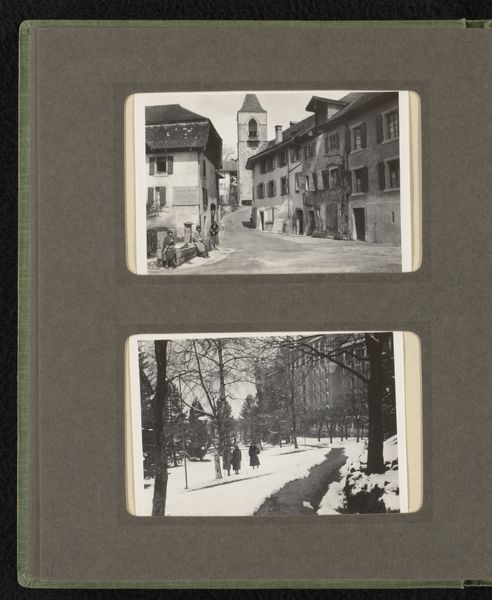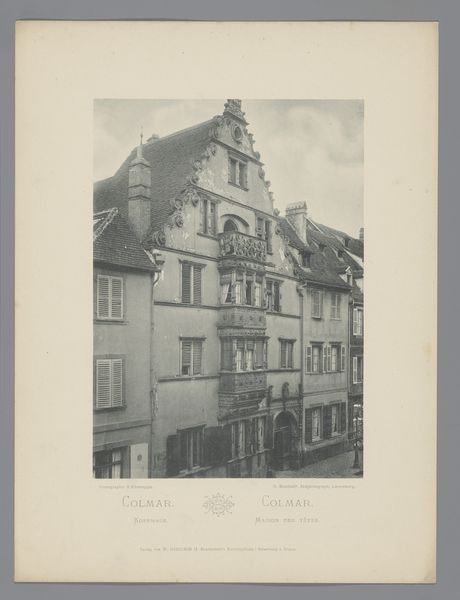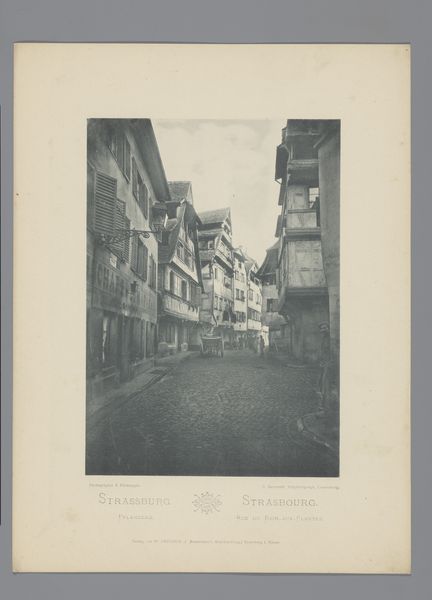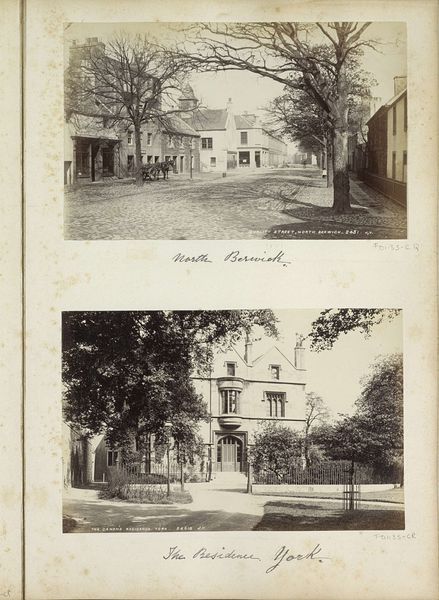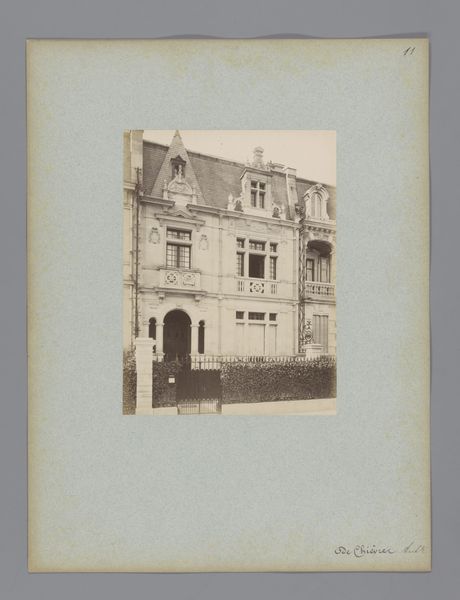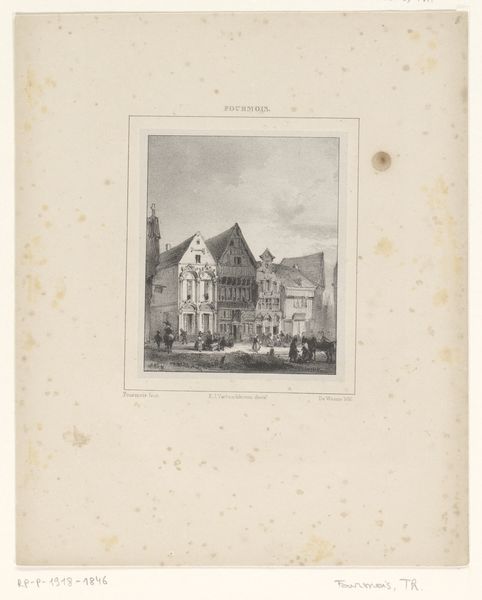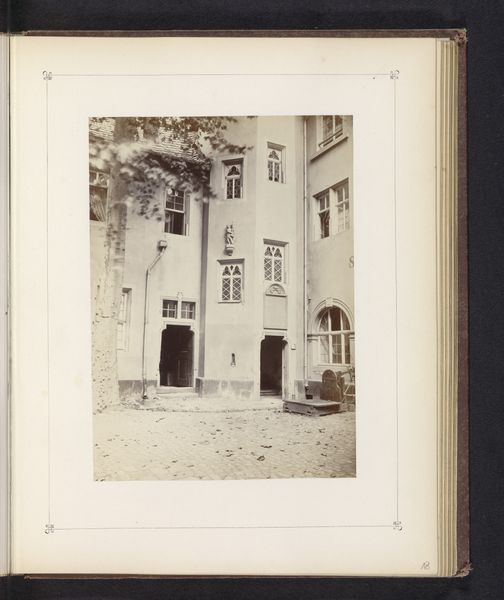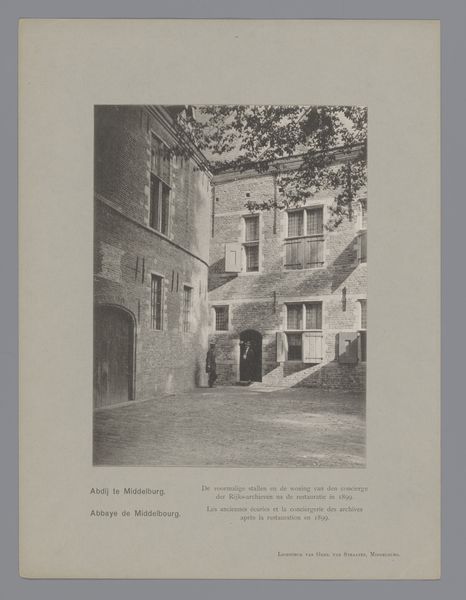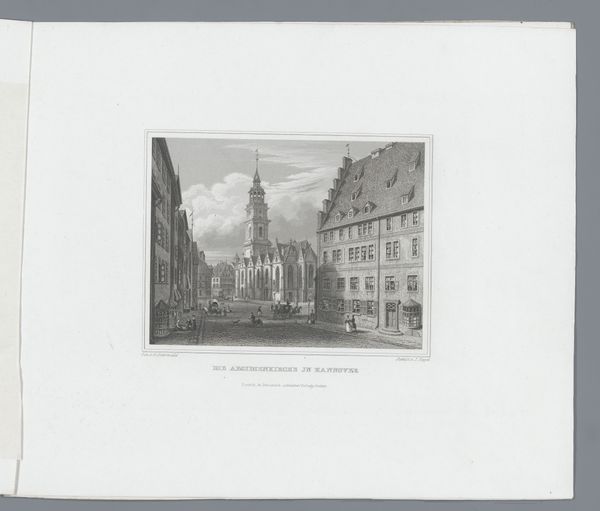
photography
#
dutch-golden-age
#
landscape
#
street-photography
#
photography
#
cityscape
#
street
#
modernism
Dimensions: height 244 mm, width 198 mm
Copyright: Rijks Museum: Open Domain
Curator: This artwork is titled "Twee foto's met straatgezichten in Monschau"– "Two photos with street views in Monschau"–by Frank Willem van den Berg, taken sometime between 1932 and 1939. It’s a black and white photograph showing two separate views of a town. Editor: It’s interesting how van den Berg presents these streetscapes in tandem. They're almost like before-and-after shots, or two sides of the same coin. What stories do you think he's trying to tell here? Curator: Looking at these photographs, I see them as interventions, political even. The artist isn’t simply documenting; he's curating our gaze. How does the choice of black and white, during a period rife with technological advancement, influence our reading of the image? What does this choice express about the role and purpose of the city? Editor: I hadn't thought about it that way. The lack of color definitely gives the photos a timeless quality. Curator: Exactly. This allows us to contemplate not just the city of Monschau, but urbanity and representation itself, right on the cusp of World War II. There's a sense of tension here, wouldn't you agree? Does the serene imagery serve to underscore or perhaps mask the tumultuous political climate of the era? Editor: That tension is definitely palpable now that you mention it. I almost get a sense of foreboding despite the quiet scenes. So, the seemingly simple street views become a loaded commentary on the times. Curator: Precisely. Art, especially photography, becomes a powerful tool, right? I wonder what the people in these pictures experienced later on? Editor: I hadn’t considered all the layers of context woven into what seems like a simple snapshot. Thanks for opening my eyes to its complexities. Curator: And thank you for your insights! These types of exchanges always spark further lines of inquiry.
Comments
No comments
Be the first to comment and join the conversation on the ultimate creative platform.
